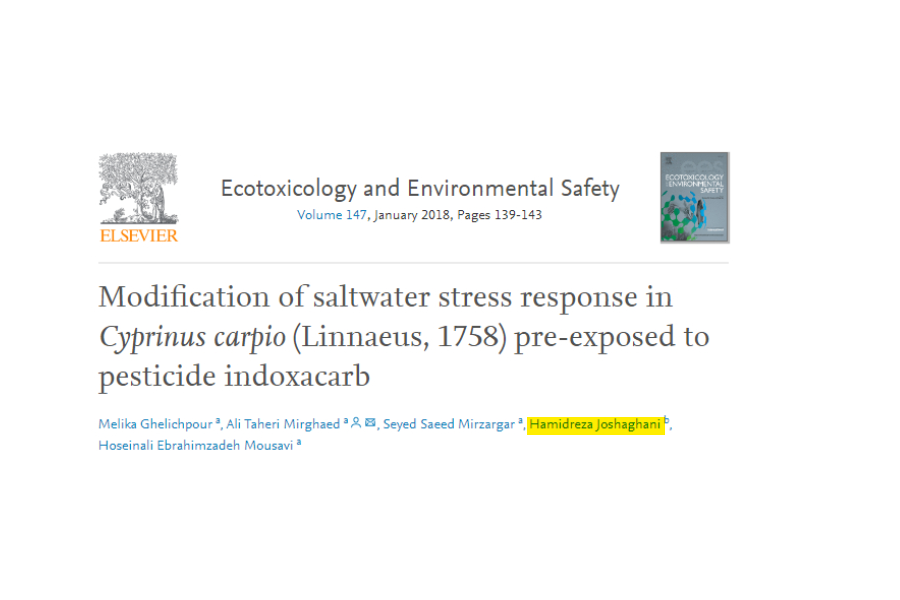اثرات سمی ایندوکساکارب بر هیستوپاتولوژی آبشش و کلیه و شاخص های بیوشیمیایی در ماهی کپور (Cyprinus carpio)
Abstract
The aim of this study was to determine the biochemical and histopathological effects of indoxacarb on an economic fish species Cyprinus carpio. The fish were divided into four triplicated groups exposed to either of 0% (control), 5% (0.75 mg/L), 10% (1.5 mg/L) or 20% (3 mg/L) of the pesticide LC50. Blood sampling was performed after 7, 14 and 21 days exposure. There were no changes in blood calcium levels at any times. In the indoxacarb-treated fish, chloride levels decreased at the first and increased at the second sampling compared to the control. In 3 mg/L treatment, phosphorus increased significantly after 7 days compared to the control. Plasma glucose levels decreased significantly at the 7th and 14th days sampling; however, it increased at the 21st day. After 7 days, creatinine level in 3 mg/L treatment was significantly lower than the control; however, the creatinine levels of indoxacarb treatments were higher than the control at the 21st day. The indoxacarb-treated fish had higher plasma urea levels compared to the control at the 7th day. At the 21st day, plasma urea level at 3 mg/L was significantly lower than the control treatment. Edema, Lamellar curling, hyperplasia, lamellar fusion and hyperaemia were observed in the indoxacarb-treated fish gill. Tubular necrosis, hematopoietic necrosis, melanomacrophage aggregates, Bowman’s capsule edema, glomerulus degeneration and hyperaemia were observed in the indoxacarb-treated fish kidney. Generally, sublethal concentrations of indoxacarb cause stress, hydromineral imbalance, metabolism alteration and gill and kidney damages in common carp.




پاسخ دهید
میخواهید به بحث بپیوندید؟مشارکت رایگان.